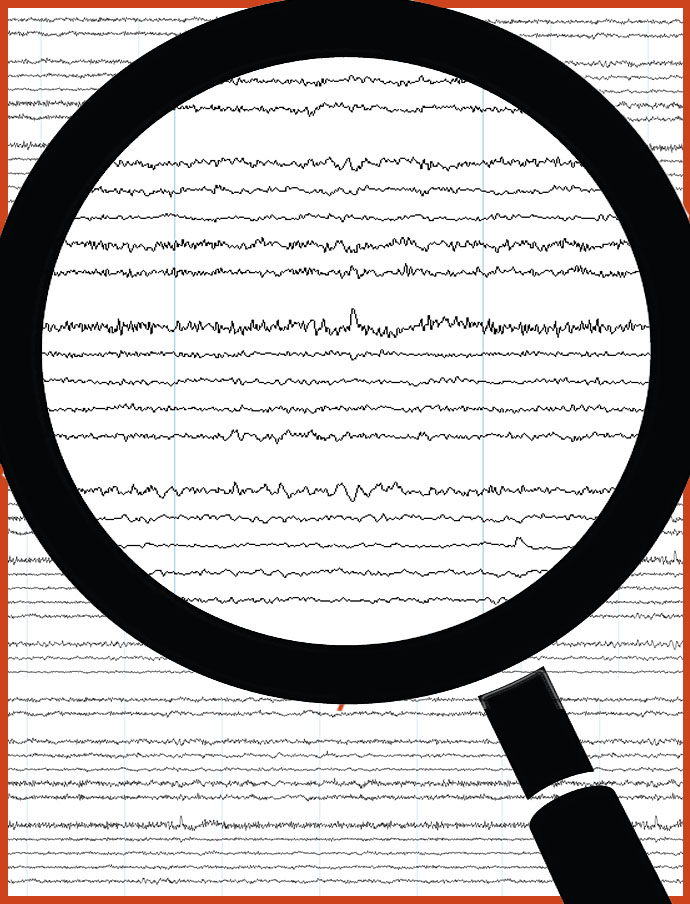What is Neurofeedback?
What is Neurofeedback?
.jpg) EEG neurofeedback, also known as EEG (electroencephalogram) biofeedback, is a safe, non-invasive, painless learning procedure during which sensors are placed on the surface of the patient's head. The sensors record brain electrical activation level and enable participants to learn to improve mental performance, normalize behavior and/or stabilize mood. The information is displayed on a computer screen, together with sounds, which change according to the brain's activity levels. Therefore, the patient can read, understand and influence his or her brainwave activity. Once the patient learns to access and regulate the brain more effectively, symptoms begin to improve or performance optimizes.
EEG neurofeedback, also known as EEG (electroencephalogram) biofeedback, is a safe, non-invasive, painless learning procedure during which sensors are placed on the surface of the patient's head. The sensors record brain electrical activation level and enable participants to learn to improve mental performance, normalize behavior and/or stabilize mood. The information is displayed on a computer screen, together with sounds, which change according to the brain's activity levels. Therefore, the patient can read, understand and influence his or her brainwave activity. Once the patient learns to access and regulate the brain more effectively, symptoms begin to improve or performance optimizes.
EEG neurofeedback is a natural, self-regulating approach that helps restore the brain's ability to function in the manner in which it was designed to function. It is perhaps the biggest breakthrough in non-invasive medicine in the last 50 years.
Also known as EEG biofeedback, braintraining and brain computer interface (BCI), neurofeedback utilizes the operant conditioning learning model to achieve self-regulation. Additionally, monitoring the brain’s bioelectrical system advises us of chemical as well as the electrical activity within the brain.

A neurofeedback session involves the client sitting in a comfortable chair in a quiet room. He or she will have electrodes placed on the part of the scalp where the training will occur, which is determined by the QEEG interpretation. The visual feedback on the computer screen and auditory feedback through speakers or headphones are positive reinforcement. Creating these reward parameters involves skill and training.
.jpg)
When the brain's electrical system is performing optimally, the computer will provide the sound and visual approval the clinician set sup. The brain responds to positive feedback and the absence of it on a very basic level and chooses to be rewarded.
After a number of sessions, to be determined by the clinician, and based upon session-to-session review and mid-treatment assessments, the changes are generally permanent. Once the optimized profile is established, the client may see subtle to dramatic behavioral changes. There are different forms of visual and auditory feedback. Knowing which ones to administer is the key to successful treatment.
BSI’s BCIA Neurotherapy Certificaion Program course provides the clinician with the fundamental tools for incorporating neurofeedback into his or her practice.
Further reading:
Doing Neurofeedback – Richard Soutar and Robert Longo
Introduction to Neurofeedback - John Demos
The Neurofeedback Book – Michael and Lynda Thompson
A Symphony in the Brain - Jim Robbins
View BSI webinar recordings at your own pace. Inexpensive CEs. www.bsiwebinars.com
Neurofeedback Bibliography with abstracts. Last compiled Sept '14
TESTIMONIALS FROM REPORT USERS AND COURSE ATTENDEES:
"What an honor and privilege to be taught QEEG and LORETA by two of the most recognized and respected people in the field of EEG; Joel Lubar, PhD and Jay Gunkleman, QEEGD. BSI's small class size, coupled with hands on experience gave us real insight into the mechanics of using QEEG with clients. I now feel ready to go forward by incorporating these techniques into my practice."
- - - RI, LMFT, CNT Los Angeles, CA
"To date I’ve done over 300 Qs with BSI and compared to other services I’ve used, their reports are far superior and Jay is always available for discussion of each case. I have learned so much from Jay by discussing these cases with him."
- - - RJS, PhD, LCSW, BCB, BCN, Houston, TX
"I have found BSI's recorded webinars as an excellent resource to improve my neurfoeedback skill sets. BSI's webinars provide user-friendly access to leading applied and research experts within neurofeedback. In addition, my graduate students have purchased recorded webinar sessions; they reported this resource reduces the complexity of neurofeedback through cohesive and comprehensive trainings related to neurofeedback."
- - - JL, EdD, Assistant Professor Psychology, Illinois Institute of Technology
"Dr. Kerson is an excellent teacher and neurofeedback supervisor. She provides a warm and caring approach to learning the process as well as the content - even when it is difficult to understand. She has a great sense of humor, and makes the learning interactive and fun. More importantly, she really cares about her students and takes the time to be sure everyone is succeeding."
- - - SS, PhD Associate Professor UNLV





